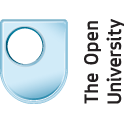The Open University, UK
Customer & Industry
The Open University is a world leader in modern distance learning, the pioneer of teaching and learning methods which enable people to achieve their career and life goals studying at times and in places to suit them. With 250,000 students, studying hundreds of different course subjects all over the world. As part of supporting their students and teachers the OU produce course materials in a wide variety of user formats with PDF and Print remaining one of their major parts.
Requirement
The Open University have used APP (3B2) and APP-Enterprise successfully for many years to create their printed and PDF format course materials in both a manual and fully automated, on-demand workflow.
For a new publication type in January 2013 the OU wished to optimise their APP implementation and speed up the on-demand generation utilising the new features available to them since their existing V8 templates (stylesheets) had been configured. The new configuration template library would then be used as a basis to go on and upgrade all their existing legacy templates.
Technical Challenges
The new template had to be configured to work both in a manual (desktop) composition environment as well as the APP Enterprise (ACS) fully automated environment taking parameters from menu and/or job file inputs. This involved custom JavaScript FOM based automation and other common features such as page type sequence handling and CALS table coding.
One of the major requirements for the new template was to support the formatting of a given XML data stream using inline, paragraph, and block styles, defined in a secondary style-file XML structure. And do this in a more efficient and stable way than the previous XPath based method. Due to the new JavaScript FOM API toolset released in APP version 10, this task was made much easier and faster. By loading both XML files into the template before formatting has started, it was possible to interrogate the data file and also format the style-file virtually in memory to define a set of re-usable JavaScript objects ranging from; paragraph style definitions and rules, to block styles and table types, which are subsequently called by the corresponding XML data context specific tag mapping, when formatting the document layout.
Outcome & Benefits
The new template library has dramatically improved the efficiency of the entire online on-demand system for these documents. Reducing CPU usage on the server, returning generated PDFs faster to the users and formatting documents in 3B2 (APP), at least 7 times faster than the original configuration.

